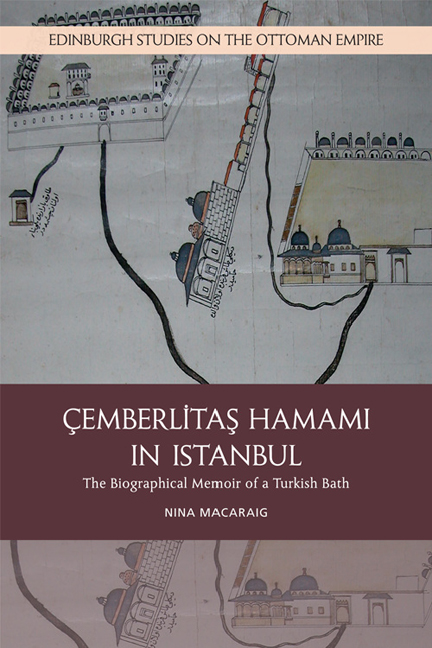Book contents
- Frontmatter
- Contents
- List of Tables
- List of Figures
- Preface
- Acknowledgements
- Note on Transliteration
- Introduction
- 1 Ancestry
- 2 Family
- 3 From Birth to Breadwinner
- 4 Impressions and Identity
- 5 In Sickness and in Health
- 6 Old Age
- 7 Second Spring
- Epilogue
- Appendix: Endowment Deed of the Atik Valide Vakfı (VGM, D. 1766)
- Notes
- References
- Index
4 - Impressions and Identity
Published online by Cambridge University Press: 28 April 2021
- Frontmatter
- Contents
- List of Tables
- List of Figures
- Preface
- Acknowledgements
- Note on Transliteration
- Introduction
- 1 Ancestry
- 2 Family
- 3 From Birth to Breadwinner
- 4 Impressions and Identity
- 5 In Sickness and in Health
- 6 Old Age
- 7 Second Spring
- Epilogue
- Appendix: Endowment Deed of the Atik Valide Vakfı (VGM, D. 1766)
- Notes
- References
- Index
Summary
It describes how all hamams, among them also the aforementioned hamam, help the believers to carry out their religious duties as they are described in the Qur’an and the Hadith; how all people of the protected City, noble and lowly, men and women, rejoice in visiting the baths, for they offer them the opportunity to meet with each other and to exchange good and bad news alike and to engage in many matters, sometimes even carnal pleasures; how Ibn Sina and those who follow in his footsteps consider bathhouses to be a well-spring of health; and how Sultan Mehmed Khan, Conqueror of the Protected City, deemed it one of his most important duties to decorate the city with splendid and costly baths, among other exalted buildings.
A Place for Ritual Cleansing
Because Ottomans were deeply affected by their relationship to God, Çemberlitaş Hamamı's religious identity as a Sunni Muslim adhering to the Hanefi rite, prevalent in the Ottoman Empire and modern-day Turkey, deserves to be discussed first. Islam places great emphasis on cleanliness and purity (taharet), both internal and external. Internal purity means to be clean of pride and of the love of self and the world, whereas external purity refers to physical cleanliness. A Muslim cannot possess one without the other; the two are inseparable. The following text passage from the Sahih Muslim, for Hanefi Muslims after the Sahih al-Bukhari the second most important collection of the sayings and traditions of the Prophet Muhammad, draws a quite explicit connection between washing and the purification from sins:
Abu Huraira reported: Allah's messenger (may peace be upon him) said: When a bondsman – a Muslim or a believer – washes his face [in the course of ablution], every sin he contemplated with his eyes will be washed away from his face along with water, or with the last drop of water; when he washes his hands, every sin they wrought will be effaced from his hands with the water, or with the last drop of water; and when he washes his feet, every sin towards which his feet have walked will be washed away with the water or with the last drop of water with the result that he comes out pure from all sins.
- Type
- Chapter
- Information
- Cemberlitas Hamami in IstanbulThe Biographical Memoir of a Turkish Bath, pp. 116 - 152Publisher: Edinburgh University PressPrint publication year: 2018

